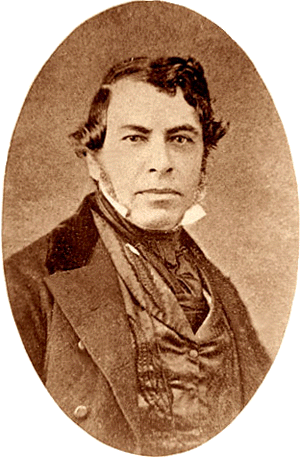 STAR scores, the state’s standardized testing system that’s used to “grade” schools’ progress with API scores, were released Thursday at 11 a.m.
STAR scores, the state’s standardized testing system that’s used to “grade” schools’ progress with API scores, were released Thursday at 11 a.m.
Hart district officials touted results, which they said stayed on par with past scores that well exceeded state and county averages.
“Even when our numbers stay the same, they are impressive, especially compared to county and state scores,” noted David LeBarron, director of curriculum and assessment for the William S. Hart Union High School District.
The tests, taken last spring by 18,282 students, measure student proficiency of the state’s academic content standards – the specific content that students are expected to master at each grade level and course.
API scores, which measure schools progress based on goals determined by previous school and district results, will be released in October.
However, the state is revamping the system, and local districts will start seeing changes over the next few years.
This year is the final time that the STAR tests were used as the primary evaluation for students in grades two to 11, a state Department of Education official said.
Some students will continue to take the STAR, however, some will participate in the new Smarter Balanced field tests that will assess students in the Common Core State Standards in English, Language Arts and Math, in preparation for the (new) assessment tests.
The state does not yet have a formal list for which districts will be considering the new field tests, she said. The plans to move toward computerized testing, which is a state goal, are still being looked at by Sacramento.
The state’s Legislature is considering a transition plan that would limit the use of STAR in the coming school year, 2013-14, Jung said. The new tests would take place in 2014-15.
This year, as in years past, student scores on the STAR tests fall into one of five levels, ranging from far below basic, below basic, basic, proficient, and advanced. The goal is to increase the percentage of student scoring proficient and above, while decreasing the percentage of students who score below basic.
Statewide, scores on the annual Standardized Testing and Reporting assessments slipped by a fraction of a percentage point this year as schools dealt with ongoing budget reductions and the transition to the Common Core State Standards, according to a statement by state Superintendent of Public Instruction Tom Torlakson.
Students managed to hold on to the vast majority of gains posted over the last 11 years, with a majority of students statewide continuing to achieve at the proficient or advanced level in mathematics and English-language arts.
Only one in three students achieved proficiency in 2003, the year STAR tests became fully aligned to the former state content standards.
LeBarron noted that the API calculation places more emphasis on the number of students who move up to basic, rather than the number who move from basic to proficient and above.
Performance remained the same at the 11th grade, and decreased by one percent at the 7th grade level and two percent at the eighth grade level.
The percentage of Hart District students scoring at the Proficient or Advanced levels surpassed the percentage of Los Angeles County students scoring at these same levels by more than 17 percent at the junior highs and more than 15 percent at the high schools.
“The true purpose of a test is to give us information we can use,” LeBarron continued. “We need to analyze the results and determine where we did well and were we can do better. Every school is doing that.”
He noted that the STAR scores are only one piece of the assessment picture, but they are the piece that is the largest for the public. “We take it very seriously,” he concluded. “Our students’ performance on the state assessments is a measure we use to evaluate our instructional programs.”
HART DISTRICT PRESS RELEASE
The California Department of Education released the 2012/13 STAR test results today and the data showed that Hart District students demonstrated slight increases from the previous year and continue to perform consistently higher than their peers county-wide. It is these test scores that will be used to calculate the District’s, and each school’s Academic Performance Index (API) that will be released in early September.
“Even when our numbers stay the same, they are impressive, especially compared to county and state scores,” noted David LeBarron, director of curriculum and assessment for the Hart District. The tests, taken last spring by 18,282 students, measure student proficiency of the state’s academic content standards – the specific content that students are expected to master at each grade level and course.
Student scores on the STAR tests fall into one of five levels, ranging from far below basic, below basic, basic, proficient, and advanced. The goal is to increase the percentage of student scoring proficient and above, while decreasing the percentage of students who score below basic. LeBarron noted that the API calculation places more emphasis on the number of students who move up to basic, rather than the number who move from basic to proficient and above.
In English/Language arts, the percentage of Hart District students achieving at the Proficient or Advanced levels increased at two grade levels: 9th and 10th. Performance remained the same at the 11th grade, and decreased by one percent at the 7th grade level and two percent at the 8th grade level. The percentage of Hart District students scoring at the Proficient or Advanced levels surpassed the percentage of Los Angeles County students scoring at these same levels by more than 17% at the junior highs and more than 15% at the high schools.
In mathematics, both junior and senior high school students continue to significantly outperform their county peers in all grade levels and courses. This is significant in that the number of Hart District students successfully completing Algebra 1 by the end of 8th or 9th grade has increased over the past two years. An outcome of this increase is that students, who would have excelled in a math course less rigorous than Algebra I, took the Algebra I STAR assessment where it was more difficult for them to achieve proficient-level scores. In spite of this, the percentage of Hart District students scoring at the Proficient or Advanced levels surpassed the percentage of Los Angeles County students scoring at these same levels by more than 10% at both the junior highs and high schools.
“Our goal is not to get better scores on the California Standard Tests (CST),” LeBarron explained. “Our goal is to be sure that our students are being challenged to their highest ability level and as a result, they do perform well on the annual state assessments.”
In science, students take the test which reflects the subject they will finish that school year. As with English and mathematics, Hart District science students outperformed both their county and state peers in all the science tests taken including biology, chemistry, Earth science and physics.
LeBarron pointed out those students who are English learners (EL) also performed well. The percentage of Hart District EL students scoring at the Proficient or Advanced levels on the English-language Arts CST was significantly higher than their grade level peers in Los Angeles County. He also noted that the number of EL students scoring Below Basic decreased at all grade level but one.
“Hart District students do very well on the STAR tests because we place a strong focus on ensuring that our students are taught the State’s academic content standards, which is what the tests assess,” LeBarron continued. “Every one of our schools has a professional development plan that focuses on research-based programs that improve student learning.”
Results of the STAR testing program are crucial in calculating the State’s Academic Performance Index (API). “API is a growth model,” LeBarron explained. “Schools will be rewarded for growing, regardless of where they start.”
STAR test results are also an important piece of the federal Adequate Yearly Progress (AYP) report. AYP requires that a certain percentage of students be proficient in both mathematics and English. At the junior high level that percentage is determined by student performance on STAR tests and at the high school by student performance on the California High School Exit Exam (CAHSEE).
The importance of STAR test results goes well beyond the state and federal “report cards” however. Every school in the Hart District will be looking at its test data to assess its performance and to help determine the areas needing more attention, which include curriculum, grade levels, and student subgroups.
“The true purpose of a test is to give us information we can use,” LeBarron continued. “We need to analyze the results and determine where we did well and were we can do better. Every school is doing that.”
He noted that the STAR scores are only one piece of the assessment picture, but they are the piece that is the largest for the public. “We take it very seriously,” he concluded. “Our students’ performance on the state assessments is a measure we use to evaluate our instructional programs.”
STATE PRESS RELEASE
Scores on the annual Standardized Testing and Reporting (STAR) assessments slipped by a fraction of a percentage point this year as schools dealt with ongoing budget reductions and the transition to the Common Core State Standards, State Superintendent of Public Instruction Tom Torlakson announced today.
Students managed to hold on to the vast majority of gains posted over the last 11 years, with a majority of students statewide continuing to achieve at the proficient or advanced level in mathematics and English-language arts. Only one student in three achieved proficiency in 2003, the year that the STAR tests became fully aligned to the former state content standards.
“As you would expect for a school system in transition, results varied from grade to grade, subject to subject, and school to school, but the big picture is one of remarkable resilience despite the challenges,” Torlakson said. “While we all want to see California’s progress continue, these results show that in the midst of change and uncertainty, teachers and schools kept their focus on students and learning. That’s a testament to the depth of their commitment to their students and the future of our state.”
Torlakson also noted that schools across the state continued to deal with the effects of years of budget cuts and financial uncertainties throughout the 2012-13 school year. Led by Governor Brown, voter approval of Proposition 30 in 2012 averted $6 billion in further cuts to education budgets.
The California Standards Tests, the major component of the STAR program, were given to approximately 4.7 million students in grades two through eleven in 2013. Students attain one of five levels of performance for each subject tested: advanced, proficient, basic, below basic, and far below basic.
The State Board of Education has established the “proficient” level as the desired achievement goal for all students. That level represents a point at which students demonstrate a competent and adequate understanding of the knowledge and skills measured by the assessment at a particular grade, in a particular content area. This achievement goal is consistent with school growth targets for state accountability and requirements of the federal Elementary and Secondary Education Act.
The 2013 STAR results show that a significant achievement gap continues to exist for African American, Hispanic/Latino, low-income, and English-learner students, compared to their peers.
“The long-standing achievement gap among student groups remains a matter of great concern and considerable challenge,” Torlakson said. “We must move forward now so that all children—no matter where they come from or where they live—receive a world-class education that is consistent from school to school, and graduate ready to contribute to the future of our state.”
Statewide, 51.2 percent of students posted a score of proficient and above in mathematics (Table 1), which was 0.3 of a percentage point lower than last year. In English-language arts, 56.4 percent of students scored proficient and above, 0.8 of a percentage point lower than in 2012. In science, 59.1 percent scored proficient and above, 0.4 of a percentage point lower than the 59.5 percent achieved in 2012. Students showed gains in history-social science, with 494 percent scoring at least proficient, an increase of 0.6 of a percentage point over last year’s 48.8.
Looking at statewide mathematics results by grade level (Table 2), the percentage of proficient and above students rose slightly for second and fourth graders, and students taking Algebra I. There were declines among third graders, seventh graders, and high school students taking Geometry, Algebra II, and Integrated Mathematics 1. The percentage of proficient and above students was unchanged from the prior year among fifth and sixth graders as well as for students taking General Mathematics or the Summative High School Mathematics assessment.
There were similar results in English-language arts (Table 8), with gains in the percentage of students scoring proficient and above in grades nine and ten. Declines were seen among students in grades two through five, seven, and eight. Results were unchanged among sixth and eleventh grade students.
In mathematics, the percentage of Asian students scoring proficient and above increased by 1 percentage point (Table 5). African American, Filipino, and white students were unchanged from last year, while Hispanic/Latino students or those of two or more races lost a percentage point. Scores of economically disadvantaged and not economically disadvantaged students were unchanged as they were for English-only students. Scores of English learners declined by 1 percentage point.
In English-language arts (Table 10), proficient and above scores for Asian students and students who were economically disadvantaged were unchanged. For other subgroups, there were decreases of 1 to 2 percentage points.
Torlakson noted that with large-scale field testing of new computer-based assessments aligned to the Common Core State Standards proposed for the coming school year, this year’s results likely mark the last use of the STAR program statewide.
“As valuable as STAR has been, we’re getting ready to raise the bar in California’s schools,” Torlakson said. “This coming year, many students will have their first chance to try tests that measure their preparation for college and the world of work. That’s a huge challenge for every part of our education system—but one we have to tackle to give every student the opportunity to prepare for a bright future.”
Full results can be found on the California Department of Education (CDE) Standardized Testing and Reporting (STAR) Results Web page.
Like this:
Like Loading...
Related




 Tweet This
Tweet This Facebook
Facebook Digg This
Digg This Bookmark
Bookmark Stumble
Stumble RSS
RSS





























REAL NAMES ONLY: All posters must use their real individual or business name. This applies equally to Twitter account holders who use a nickname.
0 Comments
You can be the first one to leave a comment.